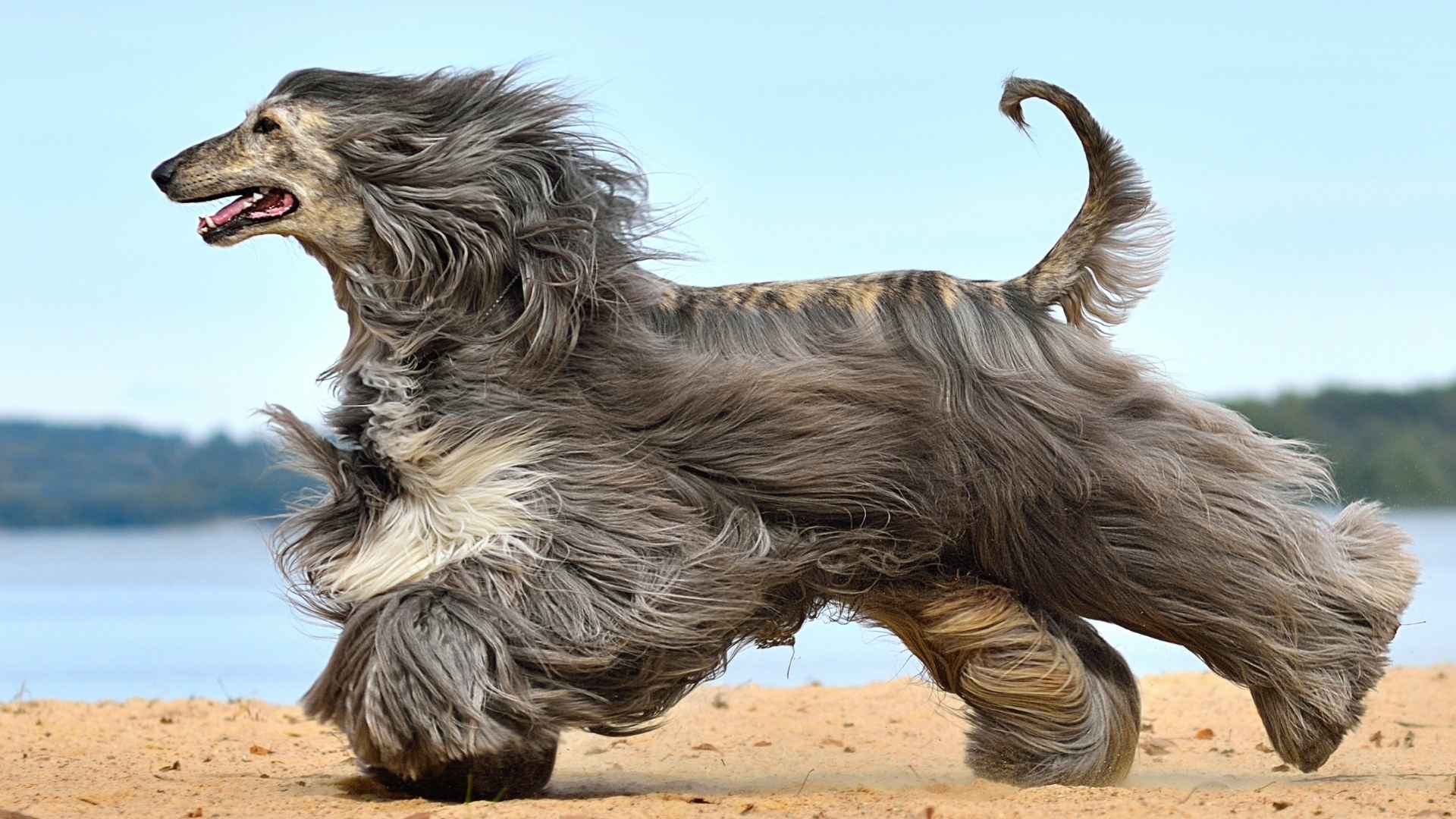Some dogs just can’t resist the thrill of the chase. Whether it’s sprinting across a field, racing after a frisbee, or keeping up on a jog, certain breeds are built for speed, and they love to show it. If you’re the type who enjoys staying active and wants a four-legged companion who can match your pace, you’re in the right place.
Over time, many dogs have been bred specifically for speed. Some were used in hunting, others in racing, and some simply needed to be quick to do their jobs. These dogs tend to be athletic, long-legged, and full of energy. But it’s not just about how fast they are; many of these breeds are also loyal, playful, and loving companions.
In this article, we’ll explore some of the fastest dog breeds in the world. From the lightning-fast Greyhound to the nimble Whippet, these pups don’t just run, they fly. Whether you’re a runner, a cyclist, or just someone who loves a good game of fetch, these athletic dogs could be your perfect match.
Most Speedy Dog Breeds
1. Borzoi
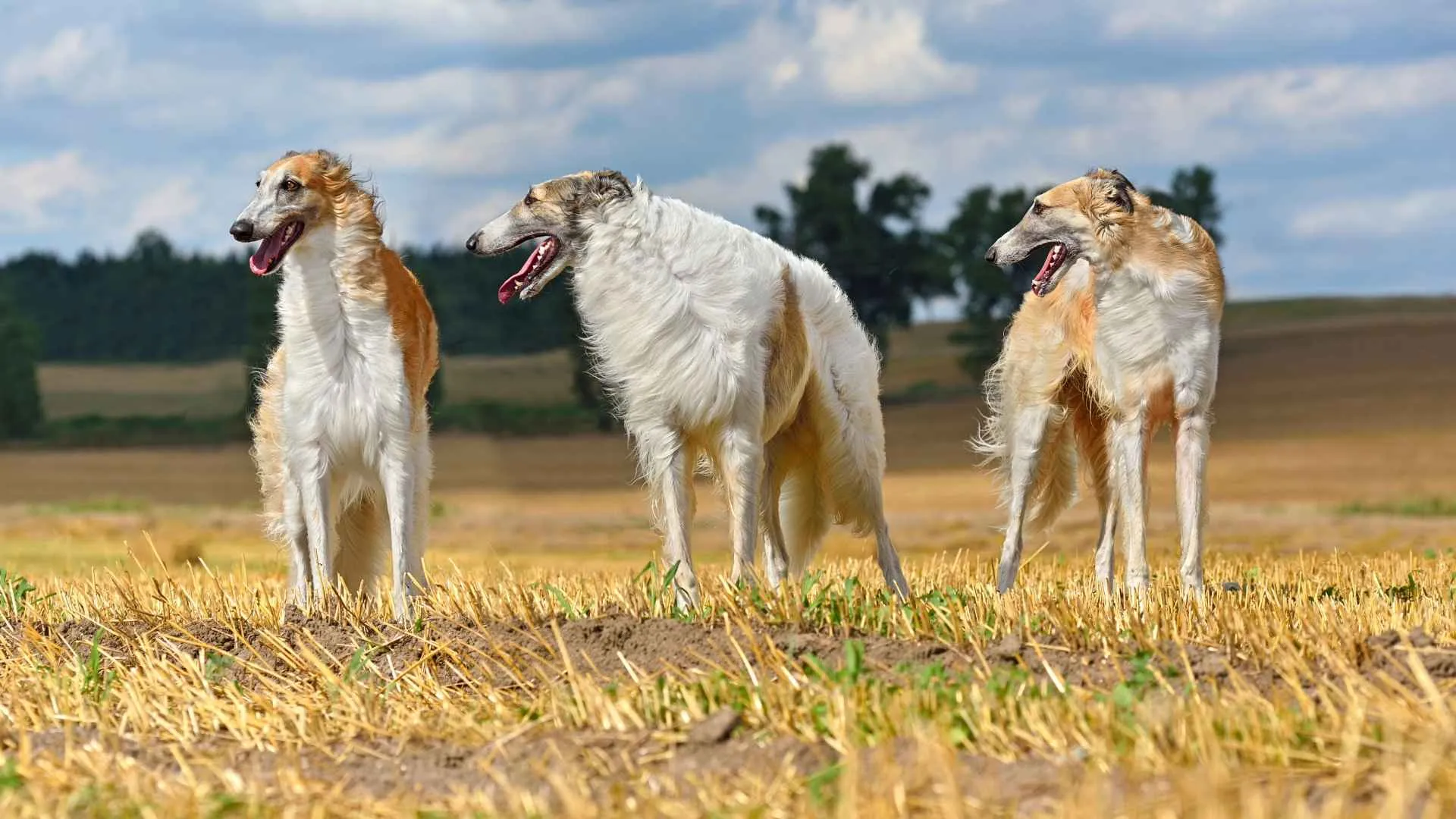
Quick Facts
Height: 26–32 inches
Weight: 60–105 pounds
Lifespan: 9–14 years
The Borzoi is a tall, graceful dog originally developed in Russia for hunting wolves across open terrain. With long, slender limbs and a streamlined build, this athletic breed is naturally fast and agile. Their calm presence and elegant posture often make them appear more reserved than they truly are.
Despite their hunting heritage, Borzois tend to be gentle and quiet at home. They enjoy lounging for long stretches but require access to open space where they can stretch their legs. According to WebMD, Daily walks or short sprints in a secure area meet their needs best.
Their long, wavy coats come in a variety of colors and need regular brushing to stay free of tangles. Shedding is moderate, but heavier during seasonal coat changes. Grooming sessions are a good opportunity to check ears, paws, and teeth.
Though affectionate with their families, Borzois often remain distant with unfamiliar people. They’re not typically playful in the traditional sense, but they bond strongly with those they trust. Their independent nature means training requires patience and consistency.
Because of their sight-driven instincts, they may chase smaller animals. It’s important to keep them on a leash unless within a fenced space, as they can cover ground quickly and will not always respond to calls once they take off.
2. Saluki
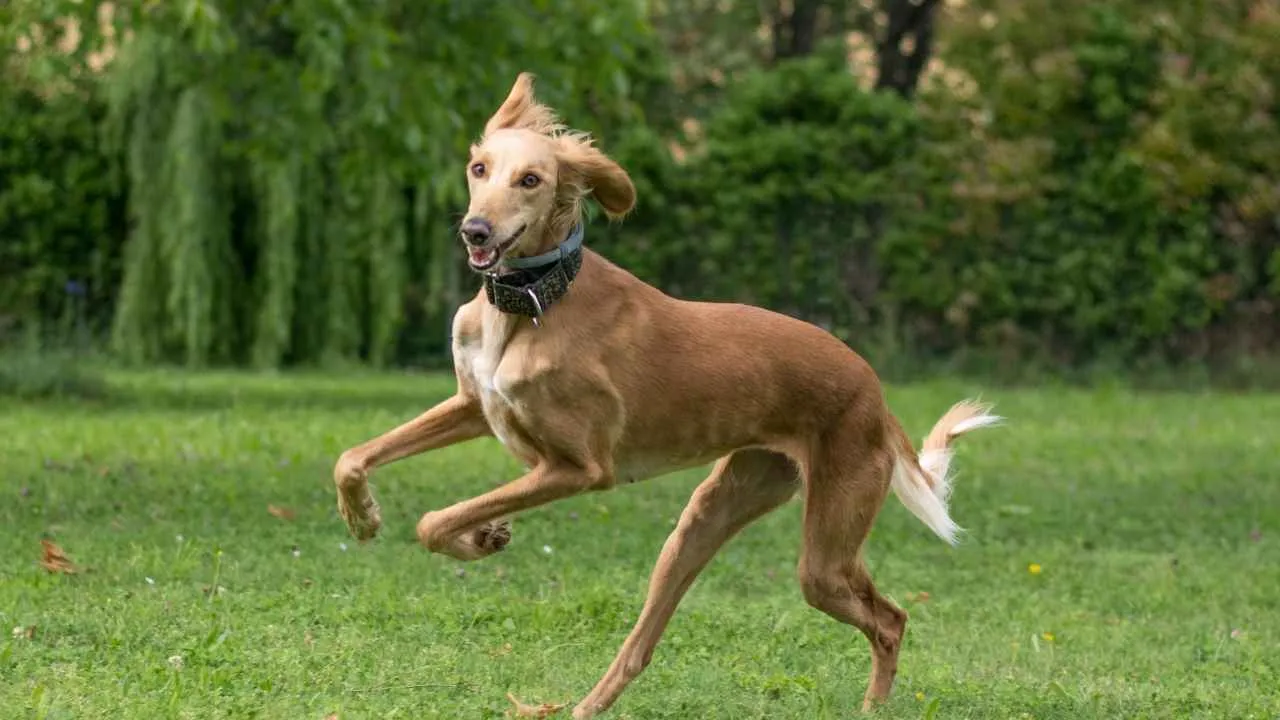
Quick Facts
Height: 23–28 inches
Weight: 35–65 pounds
Lifespan: 10–15 years
Salukis have a slim, athletic frame built for both speed and distance. Historically valued across the Middle East for their ability to pursue game in harsh desert conditions, they remain one of the most enduring sighthounds.
Though often described as quiet and polite, Salukis are far from fragile. Their long limbs and narrow chests support long bursts of running, and they require opportunities for controlled exercise. Without it, they may become restless or aloof.
Their coats come in two types: feathered and smooth. Feathered varieties need a bit more grooming around the ears and legs. Both types benefit from weekly brushing to keep them clean and tangle-free. Salukis are relatively low-odor dogs.
Socialization from a young age helps Salukis feel more comfortable around unfamiliar faces and situations. They are loyal to their family but do not always seek out attention. Affection is quiet and steady rather than overt.
Careful supervision is necessary outdoors. These dogs have strong chase instincts and little road awareness. Secure fencing and leashed walks are key to keeping them safe while allowing them to explore and exercise.
3. Afghan Hound
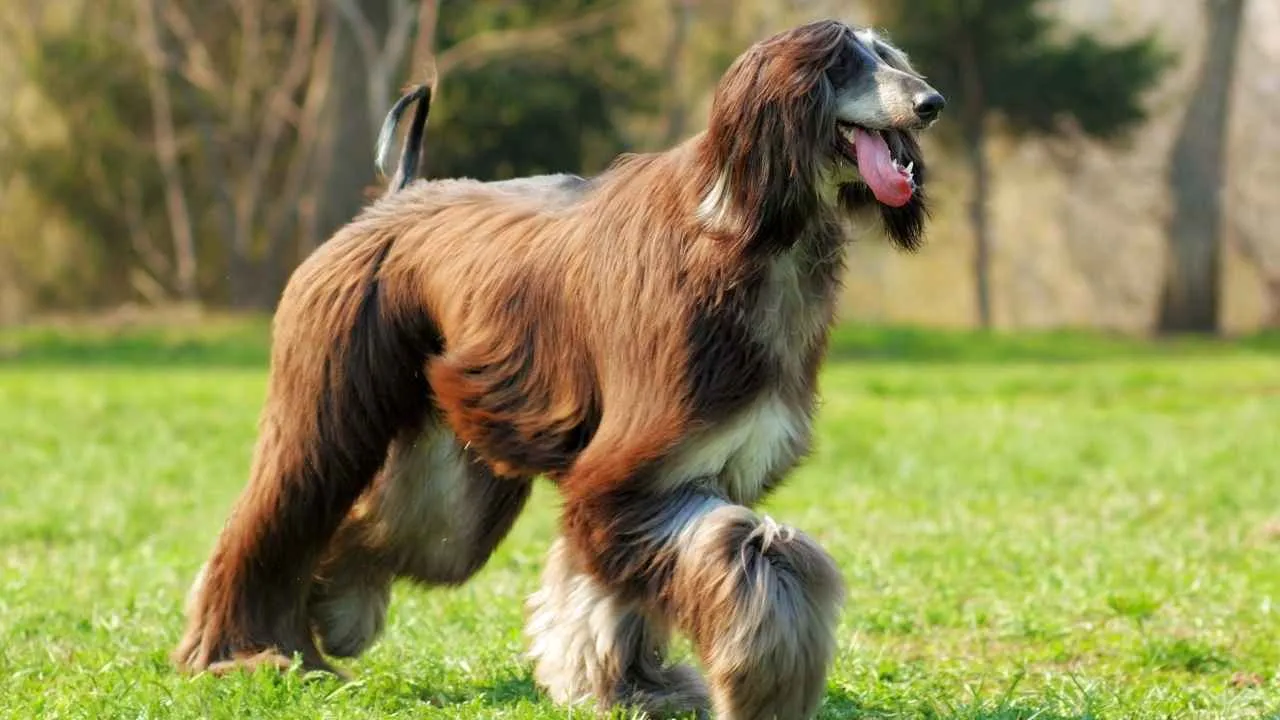
Quick Facts
Height: 25–27 inches
Weight: 50–60 pounds
Lifespan: 12–15 years
The Afghan Hound stands out with its long, flowing coat and poised demeanor. Bred to hunt across mountainous regions of Afghanistan, these dogs combine speed with agility, navigating tough landscapes with ease.
They are highly independent and often selective with affection. Afghan Hounds don’t rush into trust but form lasting bonds with familiar people. They do best in calm homes with consistent routines and thoughtful handling.
Their coat is beautiful but demanding. Brushing several times a week is necessary to avoid tangles, and many owners choose professional grooming. Bathing is also frequent to maintain coat health and appearance.
Afghan Hounds are curious observers. They don’t bark much but stay aware of their surroundings. Their reaction to smaller animals can vary—some live peacefully with other pets, while others retain their strong chase instinct.
PetMD states that early training and socialization help these dogs respond more reliably. Food rewards and low-pressure sessions work well, but they tend to ignore harsh correction. A quiet space to rest and a secure place to run are ideal for this breed.
4. Weimaraner
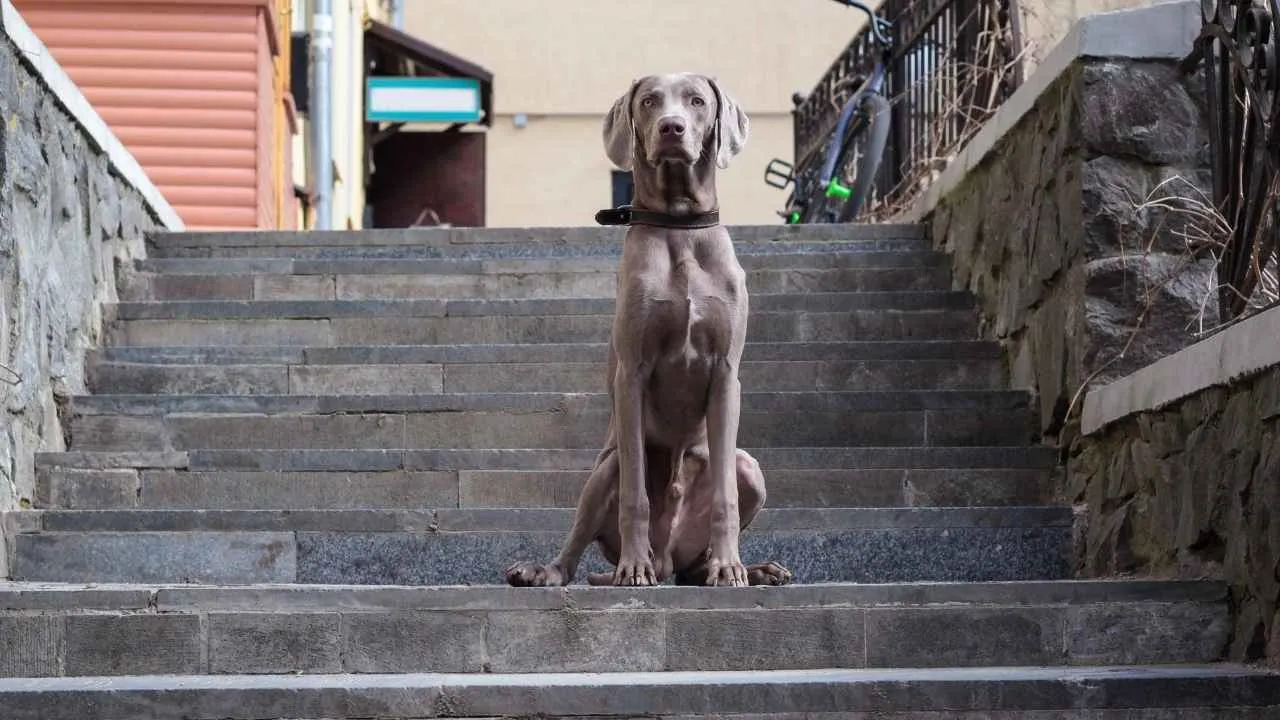
Quick Facts
Height: 23–27 inches
Weight: 55–90 pounds
Lifespan: 10–13 years
Weimaraners were developed in Germany for hunting large game and later adapted as bird dogs. Their lean, muscular frames allow them to move quickly and cover ground with power and grace. They’re known for stamina just as much as for speed.
Active and affectionate, Weimaraners enjoy staying close to their people. They do not tolerate long hours alone and thrive in homes where they can participate in daily activities. Without regular stimulation, they may develop anxious behaviors.
Their coats are short and smooth, requiring minimal grooming aside from regular brushing to reduce shedding. Most Weimaraners are a silver-gray color, and their eyes range from light amber to blue-gray.
This breed responds well to early training and enjoys learning. They excel in outdoor sports and interactive games, and many enjoy obedience and agility courses. Firm but kind guidance works best to bring out their focus.
They need a structured activity to prevent frustration. Long walks, hikes, or jogging sessions help meet their needs. While they often get along with other dogs, smaller pets may trigger their hunting instincts if not raised together from an early age.
5. Border Collie
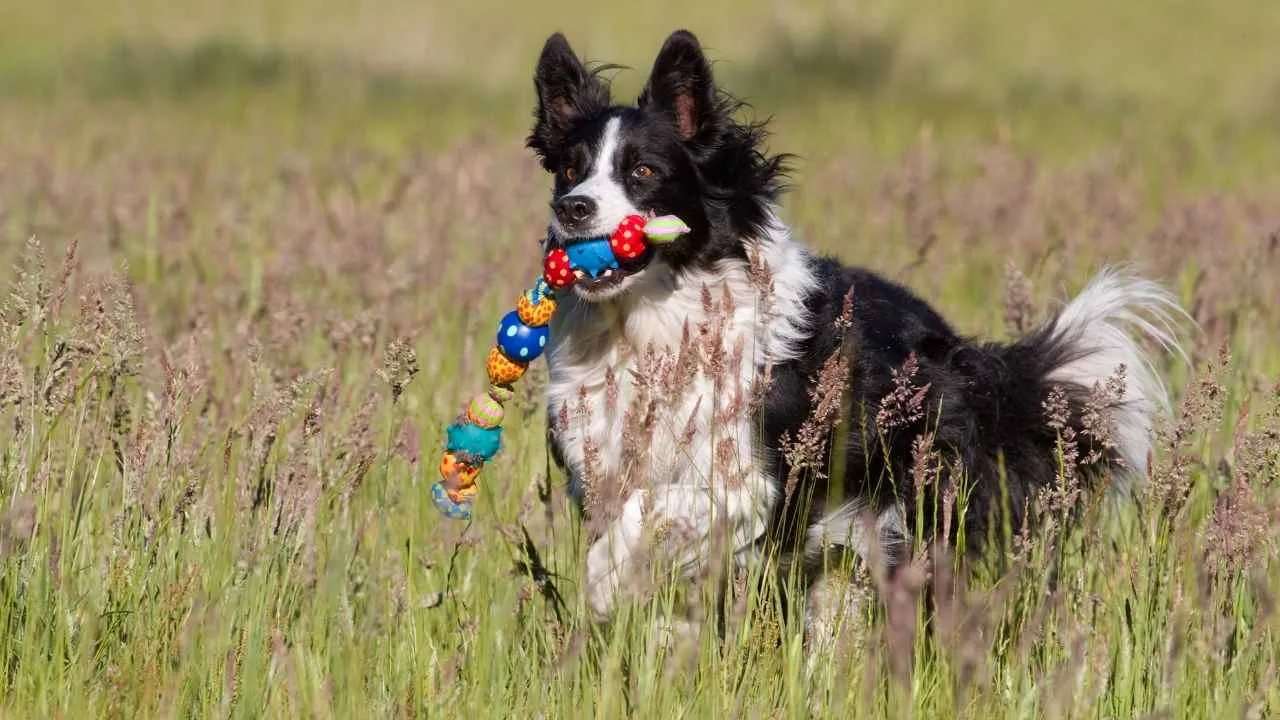
Quick Facts
Height: 18–22 inches
Weight: 30–55 pounds
Lifespan: 12–15 years
Border Collies are legendary for their intelligence and unmatched work ethic. Bred for herding sheep across the rugged terrains of the British Isles, they are as fast as they are focused. Their speed is matched by their remarkable agility, making them favorites in dog sports like agility, flyball, and disc competitions.
Often called the smartest dog breed, Border Collies thrive on mental and physical challenges. Without them, they can become destructive or obsessive. They excel in obedience trials and can learn complex tasks and verbal cues quickly.
Border Collies typically have a medium-length double coat that sheds moderately. Regular brushing is needed, especially during shedding seasons. While many are black and white, merle and tricolor variations are also common.
They form strong bonds with their families and are incredibly interactive, but may be reserved with strangers. This breed isn’t ideal for apartment life unless they get significant outdoor time. With the right outlet for their energy, they make fiercely loyal and entertaining companions.
6. Ibizan Hound
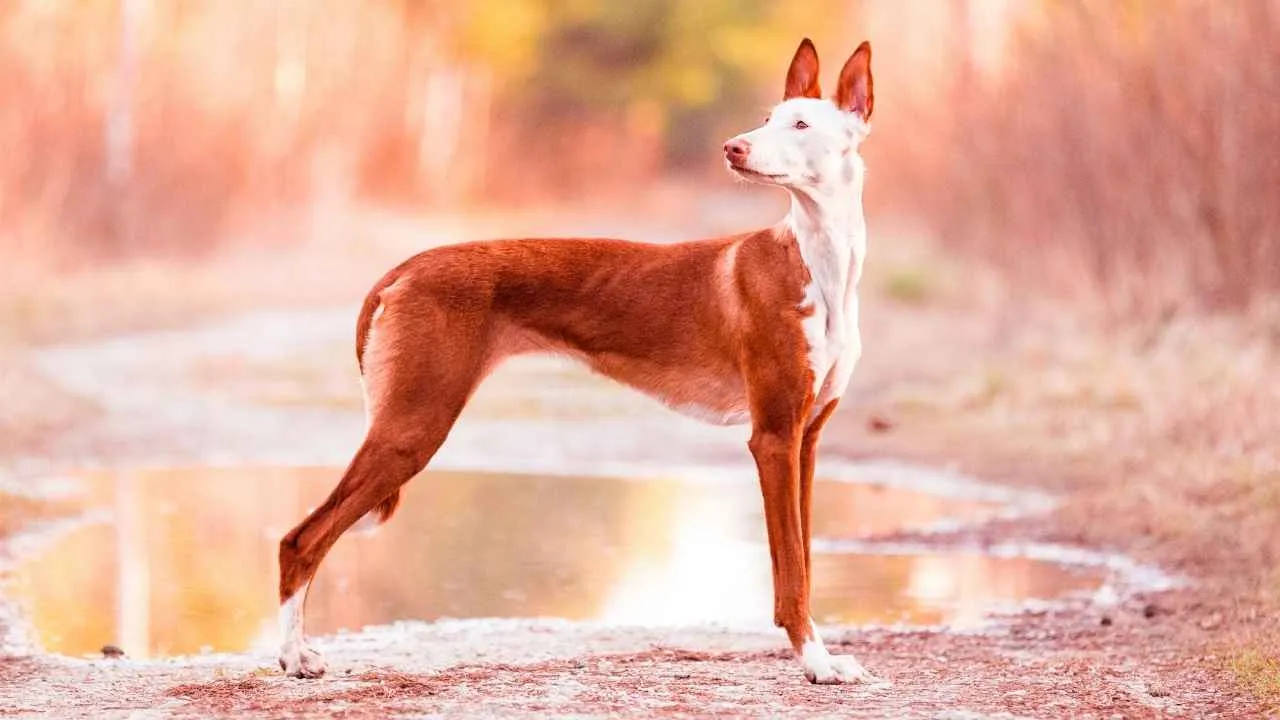
Quick Facts
Height: 22.5–27.5 inches
Weight: 45–55 pounds
Lifespan: 12–14 years
The Ibizan Hound is a rare and ancient breed, known for its deer-like elegance and long-legged speed. Originally used on the Mediterranean island of Ibiza to hunt rabbits, this breed is agile, graceful, and a powerful jumper.
The Ibizan Hound is known for a somewhat high-stepping gait and incredible leaping ability. They can clear fences with ease, so a tall and secure yard is essential. Their coat is either smooth or wiry, requiring minimal grooming beyond occasional brushing.
They are quiet indoors and make calm, affectionate housemates when given adequate daily exercise. Outdoors, however, their chase drive kicks in, so leashing is a must unless in a secure area.
They are gentle with children and other dogs, but reserved around strangers. Due to their independence and lack of road awareness, they are best suited for experienced owners with fenced spaces.
7. Doberman Pinscher
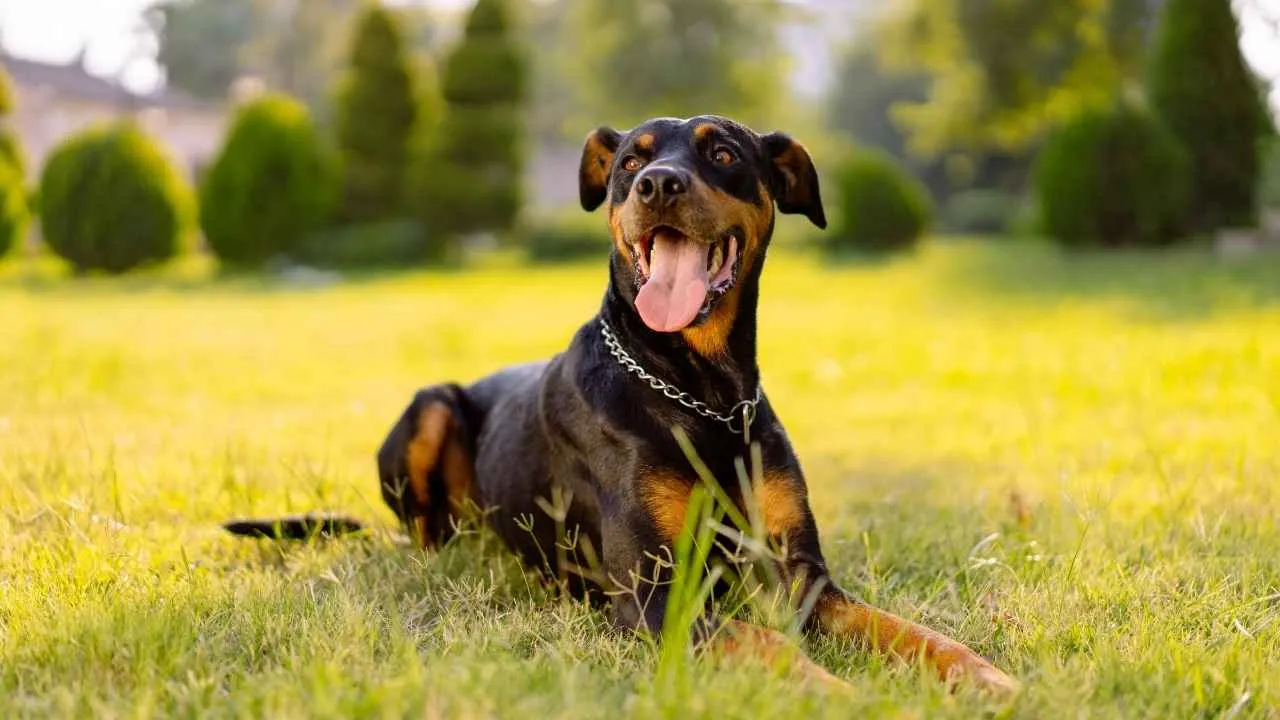
Quick Facts
Height: 24–28 inches
Weight: 65–100 pounds
Lifespan: 10–12 years
Sleek, muscular, and incredibly powerful, the Doberman Pinscher is a natural athlete. Originally developed in 19th-century Germany for personal protection, this breed is a striking combination of speed, strength, and loyalty.
Beneath their imposing exterior lies a playful and affectionate dog. Dobermans bond closely with their families and are known for their intelligence, making them responsive to training. However, early socialization is essential to manage their natural guarding instincts.
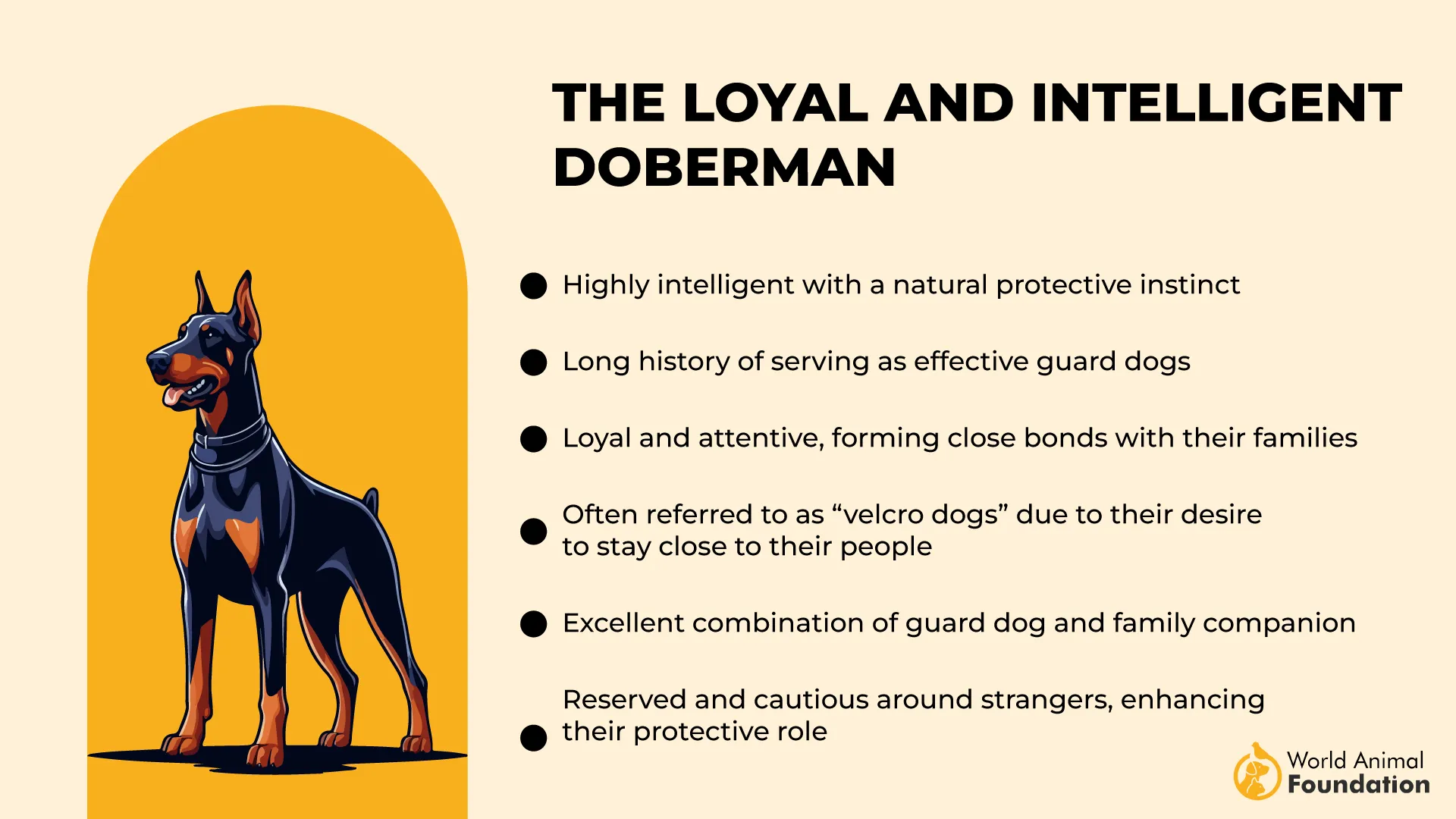
Their short, smooth coats require minimal grooming. As per Purina, common coat colors include black, blue, red, or fawn, each paired with distinctive rust markings. A quick weekly brush is usually enough to maintain their sleek appearance and reduce shedding.
Thanks to their lean, aerodynamic build, Dobermans are fast and agile. They thrive on daily exercise and are excellent partners for active owners who enjoy running, hiking, or participating in dog sports like agility or obedience trials.
Without adequate mental and physical stimulation, Dobermans may become bored or anxious. Structured training, interactive games, and consistent routines help bring out the best in this loyal and energetic breed.
8. Great Dane
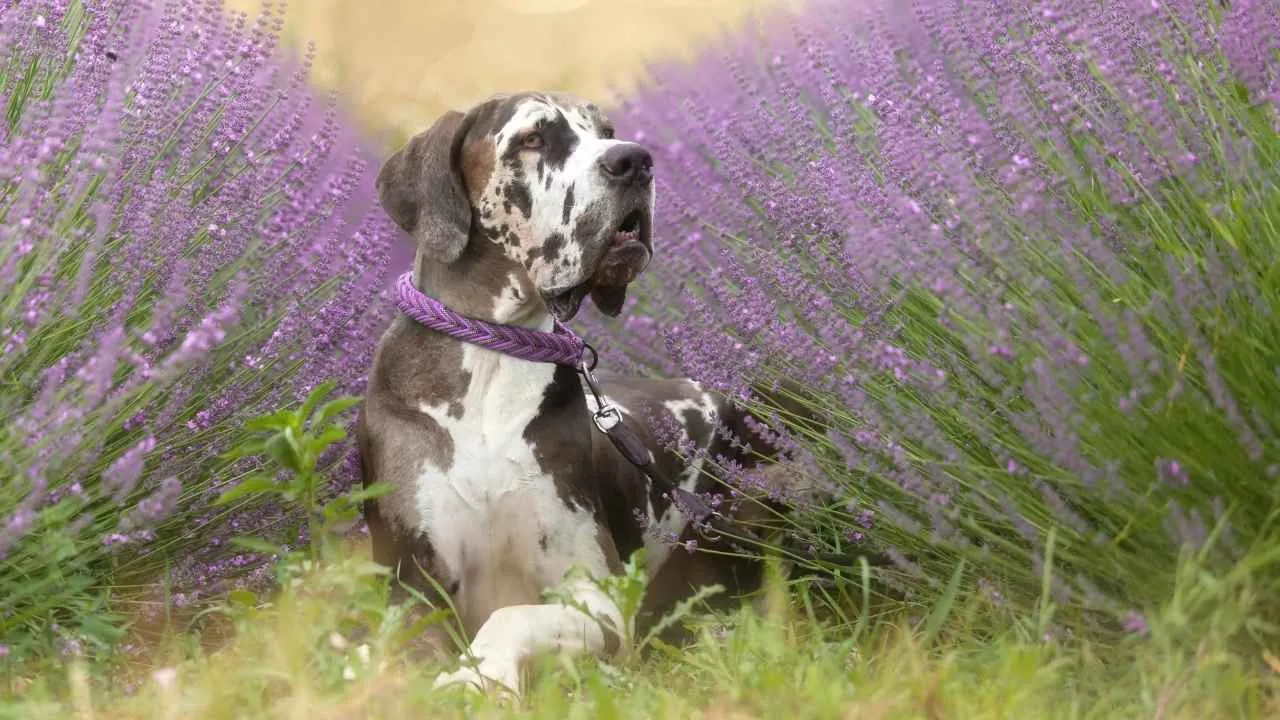
Quick Facts
Height: 28–32 inches
Weight: 110–175 pounds
Lifespan: 7–10 years
Nicknamed the “Apollo of Dogs,” the Great Dane stands out with its towering height and dignified appearance. While their size might suggest sluggishness, these gentle giants are capable of surprising bursts of speed, especially when excited or playing.
Originally bred in Germany to hunt wild boar and guard estates, Great Danes have evolved into affectionate, dependable family dogs. They are known for their calm temperament and are typically patient with children and welcoming to guests.
Their short, smooth coats are easy to maintain and come in a variety of colors, fawn, black, blue, brindle, harlequin, and more. Weekly brushing helps manage moderate shedding, while monthly baths keep their coat in good condition.
Despite their massive stature, Great Danes have moderate exercise needs. Daily walks and light play are usually enough to keep them healthy. However, due to their risk of bloat, it’s important to avoid vigorous activity right before or after meals.
Training and socialization should begin early to ensure good manners, especially given their strength. With proper guidance and care, Great Danes make devoted, majestic companions that thrive in loving homes.
9. Vizsla
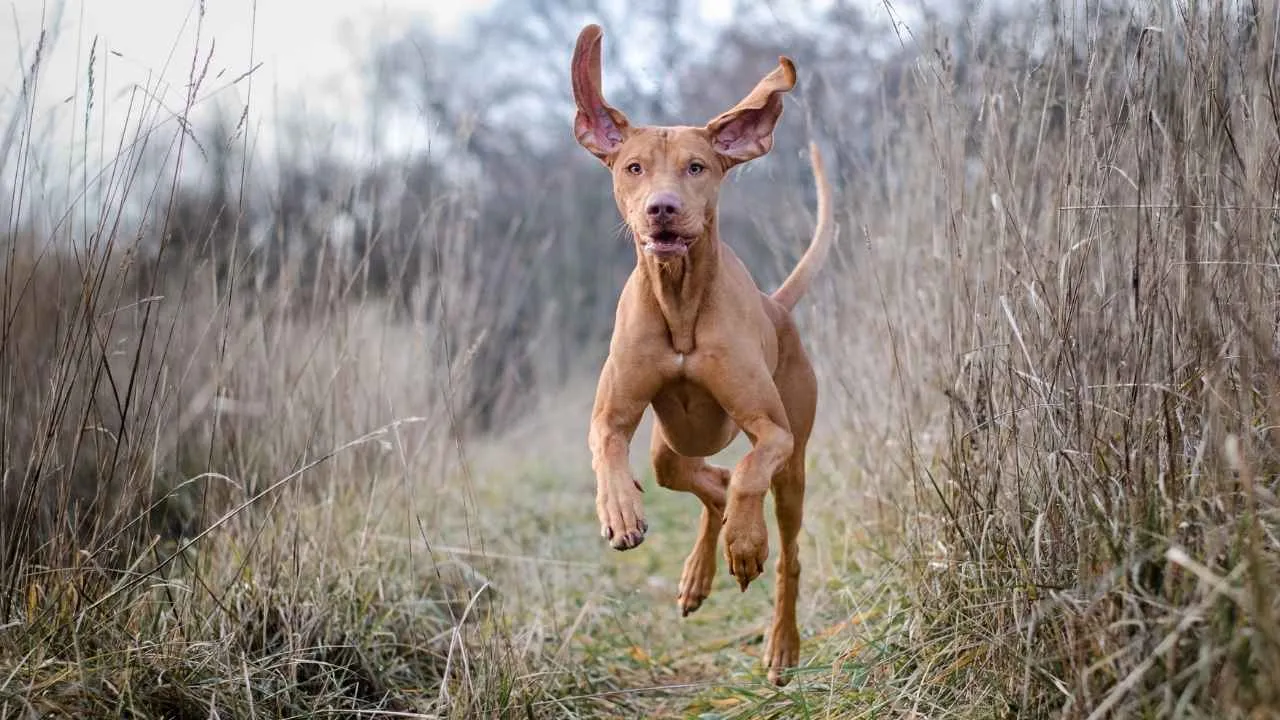
Quick Facts
Height: 21–25 inches
Weight: 44–66 pounds
Lifespan: 12–15 years
The Hungarian Vizsla is a sleek, rust-colored breed known for its speed, versatility, and affectionate personality. Originally bred for hunting and retrieving game, Vizslas are nimble runners with stamina to spare; some have been recorded sprinting at up to 40 mph.
These “Velcro dogs” form tight bonds with their humans and do not do well if left alone for long periods. Their intelligence and eagerness to please make them highly trainable, but their sensitivity requires a gentle approach.
Their short, smooth coat is easy to care for and rarely needs more than a weekly brushing. They do shed, but not heavily.
Vizslas need at least two hours of exercise each day, including off-leash running, swimming, and mental stimulation through training or puzzle toys. Without an outlet, they may become anxious or destructive.
While generally good with older children and other dogs, their high prey drive means they may not mix well with small pets like rabbits or hamsters.
Conclusion
In the world of canines, speed isn’t just about quick sprints; it reflects a combination of athleticism, instinct, and purpose. The muscular dog breeds highlighted in this list are known not only for their remarkable speed but also for their muscular builds, lean bodies, and deep-rooted history as hunting dogs. From the streamlined Saluki to the powerful Doberman Pinscher, these breeds were shaped by their roles, chasing small game, pursuing large prey, or running across vast distances with unwavering endurance.
Though their top speeds vary, each of these breeds is equipped with the agility, intelligence, and drive to maintain high speeds over short or long distances. Their deep chests, powerful legs, and strong cores make them ideal for active households and experienced owners who can meet their physical and mental needs.
But these dogs offer more than speed. Many are great family pets, forming close bonds and offering loyalty, affection, and protection. With proper training, regular veterinary care, and ample room to run, they can thrive. Whether you’re an avid jogger, a hiker, or someone looking for a high-energy companion, a speedy breed may be your perfect lead.


